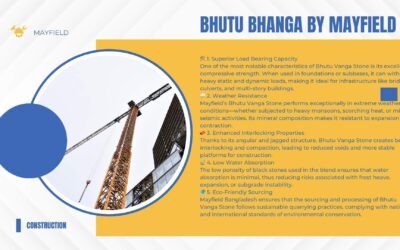Equipment and Supplies for Artificial Turf Grass
Instruments
Wheelbarrow, Shovel, Hand Tamper, Hammer, and Screen (Optional)
Resources
Gravel aggregate, crushed stone aggregate, artificial grass, and seaming cloth for weed prevention
“How do you install artificial grass?” is a question you might have if you’re wondering if installing artificial grass is a do-it-yourself (DIY) project. The good news is that you can install your own artificial turf grass if you have the necessary materials and preparation. Verify whether artificial grass carpet is permitted if you rent or have a homeowners association. The installation of artificial grass may be prohibited by certain HOAs.

Getting Ready to Install Artificial Turf Grass:
Step 1: Get the Turf Grass Base Ready
A woman in brown boots is raking dirt and grass with a shovel.
A subbase is required when laying artificial turf grass over soil or dirt. Remove any existing grass, roots, mulch, pine needles, and other obstructions that can affect the artificial turf grass from the targeted area with a shovel. Next, excavate the dirt to a depth of 2 to 2 1/2 inches.
To determine whether subterranean utilities are present in and around your dig site, give 811 a call at least a few days before starting any excavation operation.
Never cover existing grass with artificial grass. It can result in an uneven surface, weed development, and drainage problems. It might also affect how long your fake grass lasts.
Step 2: Cover Turf Grass with a Weed Barrier
Installing a weed barrier will stop weeds from spreading and piercing the artificial turf grass’s underbelly. A weed barrier is sufficiently porous to allow drainage and robust enough keep weeds at bay.
Cut as necessary after spreading the weed barrier over the aggregate base. Verify that the appropriate surface is facing up. Overlap the entire length of fabric as well as the edges. Every few feet, fasten it with landscaping anchors or 6-inch galvanized nails.
Add the aggregate in step three.
A woman driving an orange wheelbarrow loaded with crushed stones is dressed in pants and a checkered shirt.
To get the required shape and contour, apply a 2- to 4-inch layer of aggregate, such as gravel or crushed stone, after the base has been cleared, prepped, and the weed barrier has been removed. Having trouble deciding which aggregate to use as your base? Seek assistance from a Lowe’s employee.
Advice
To get rid of valleys or low areas where water can stand, make sure the land is leveled up and graded appropriately.
Rake, smooth, and tame the aggregate in step four.
Aggregate is tampered with by a woman with jeans and a plaid shirt in the background.
Using a rake, work the aggregate by spreading it with the fork side and smoothing it with the flat side. Level the aggregate with a screed for a smoother surface. Compact the aggregate with a tamper. Tamping larger areas is made quick and easy using a plate compactor.
Step 5: Mow the lawn
A lady squatting on the ground, cutting green artificial grass, is dressed in jeans and a checkered shirt.
Put the fake turf grass on top of the aggregate now that the base is ready, taking care not to drag it across the just prepared surface. This portion of the installation is considerably simpler with an additional pair of hands.
Using a sharp utility knife, trim the grass to the appropriate length. To guarantee full coverage, make sure the grass is cut just a little bit bigger than the space where it will be planted. Any surplus that you don’t need can easily be cut off.
Step 6: Secure and Seam Turf Grass Edges
You will need to sew the rolls of artificial grass together if you are using multiple rolls. Line up two artificial grass pieces edge to edge at the seams. Two sections of artificial grass are joined together using seaming cloth, sometimes referred to as artificial grass tape. Lay seaming cloth along the seam’s length after pulling back the grass. Secure the seaming fabric with 6-inch galvanized nails or landscaping anchors using a hammer.
Advice
As you travel around the grass, think about using knee pads to protect your knees.
Step 7: Connect the seams and apply adhesive.
A woman in denim is kneeling and using cream-colored seam glue on a piece of cloth.
Using a trowel, apply outdoor carpet adhesive to the seaming fabric. Make sure the glue is applied evenly across the seaming cloth’s length to prevent uneven areas.
Give the glue ten minutes to solidify. After that, gradually start reassembling the artificial grass parts’ two seams. To prevent seam gaps, make careful to check the fit as you proceed.
Advice
For a consistent appearance when placing many rolls of artificial grass, ensure sure the grain of the grass strands points in the same way.
Protect the artificial turf grass in step eight.
Someone tying nails into the grass.
Make sure the grass is flat and taut now that it has been laid. To keep the lawn level, fasten it with 6-inch galvanized nails or landscape anchors along the edge and as needed. Cut off any overlapping grass on the edges with a utility knife.
Step 9: Brush and Spread the Filler
There are bushes, plants, artificial grass, and a sidewalk that leads to a brick house.
Cover the entire area with filler, like silica sand, to help weigh down the artificial grass. To prevent the grass from seeming matted down from foot traffic, infill is buried deep in the grass. Work the sand into the grass fibers with a landscape rake or a stiff-bristle broom. This makes your lawn look smooth and helps the fibers stand up. To keep the grass looking uniform, make sure you work in the same way across it. After that, it’s time to unwind and take pleasure in your lovely, low-maintenance lawn.



0 Comments